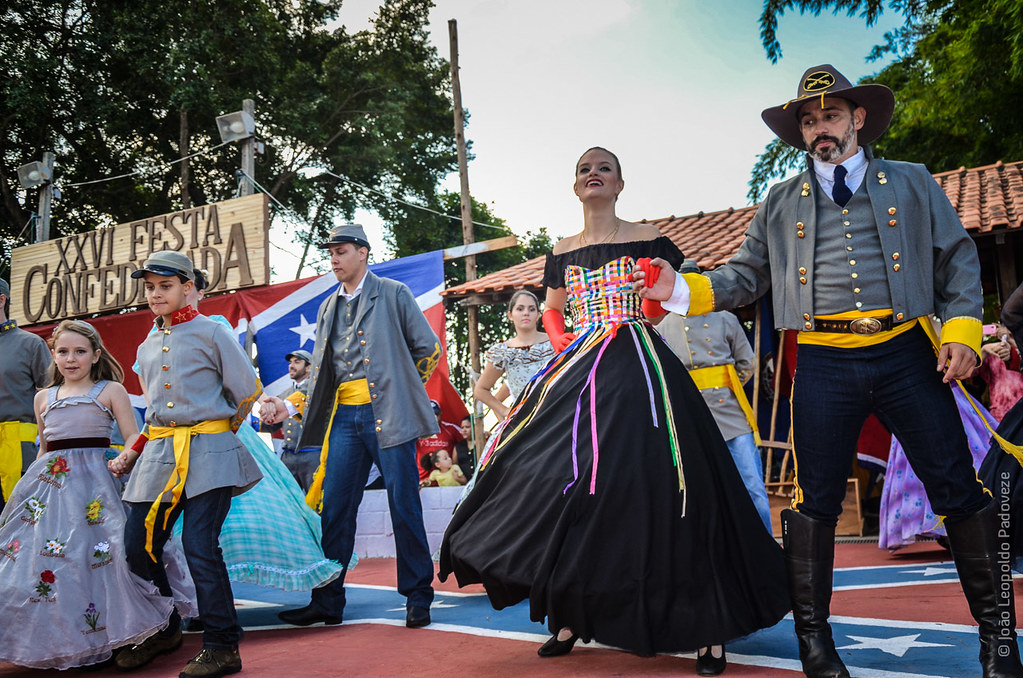Immigration fueled the growth of the United States. It long served as an attractive destination for those seeking refuge or opportunity. Within that rich historical context it’s difficult to conceive of emigration, of people desiring to leave or even desperate to do so. However, that’s exactly what happened with the Confederados.
A Society Turned Upside Down
Large swaths of the American south lay in ruins after four bloody years of conflict during the civil war (1861-1865). Confederate families fighting to preserve the status quo lost the war decisively. They also lost most everything else they held dear. That included their way of life, their economy, their personal fortunes, plus an entire generation maimed or destroyed.
As a result, their social structure changed drastically. A plantation economy based on slavery simply could not exist. Thus, with their multiple misfortunes, many of the Confederates became disillusioned and bitter. The postwar Reconstruction brought occupation, humiliation and hardship to a conquered people as their lives adjusted to a new reality.
Most of the old Confederates returned home and rebuilt their shattered lives as best they could, although not easily and smoothly by any means, in the legacy of the Lost Cause. People talked of the “War of Northern Aggression” as I grew up, still a raw spot on the collective memory more than a century later.
Leave Rather Than Adapt
Other people chose a different course and voted with their feet. They resolved to leave the United States forever. Dom Pedro II, emperor of Brazil, courted them actively for their agricultural expertise. Colonel William H. Norris of Alabama was perhaps the first to take the offer. Then, as many as ten thousand other unreformed Confederates followed his example. In Brazil they became “Os Confederados” in the Portuguese language of their new homeland. They settled in several places but flourished eighty miles northwest of São Paulo, in the adjacent communities of Santa Bárbara d’Oeste and Americana.
The local populace generally welcomed the new settlers. However, the Confederados differed from their hosts linguistically, religiously and culturally. They remained a close-knit, insular community.
The Confederados built English-speaking schools to educate their children. They harvested cotton, produced textiles and introduced crops such as pecans and watermelons. Their Protestant beliefs contrasted with their Catholic countrymen, so they built their own Baptist congregations. Also public cemeteries only allowed Catholics so they established their own burial ground in Santa Bárbara. Over time this spot became a central gathering point for an entire community and the last outpost of the Confederados.
Legacy

Descendants of these Confederate veterans and their families still live in Brazil although they’ve completely assimilated over the years. The Confederados honor their unique ancestry through the Fraternidade Descendência Americana and an annual festival, the Festa Confederada.
Imagine the odd juxtaposition of hoop skirts, Confederate uniforms, the Stars and Bars, and fried chicken in a Portuguese language, Brazilian-flavored celebration. Make no mistake though; these are Brazilians honoring a multicultural heritage rather than Confederates waiting patiently in exile. Those days are long gone. With the exception of a few quaint customs and artifacts passed along through the generations, the Confederados as a distinct cultural group have all but faded away.
Sul aumentará novamente, y’all.

Leave a Reply